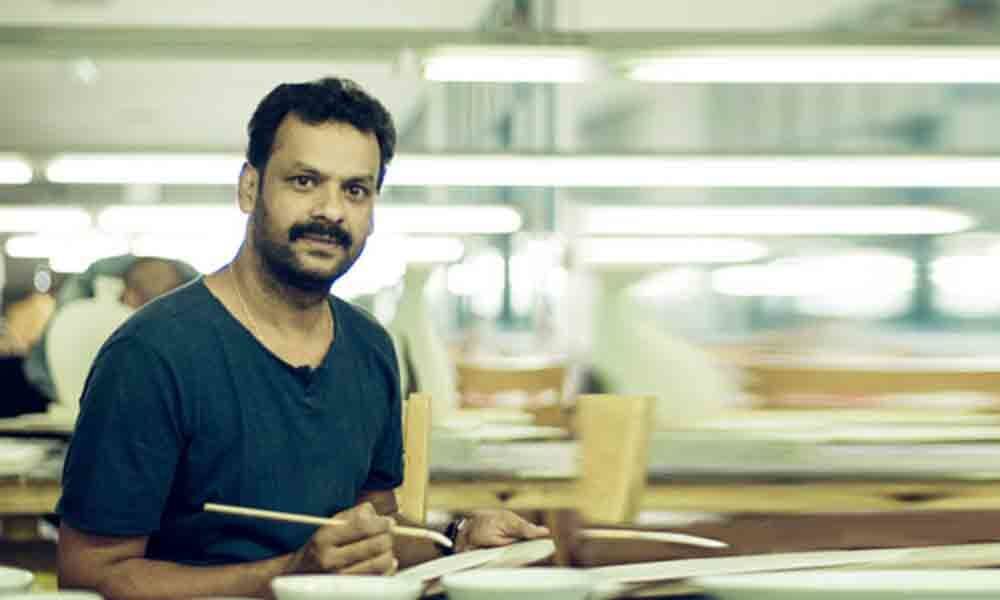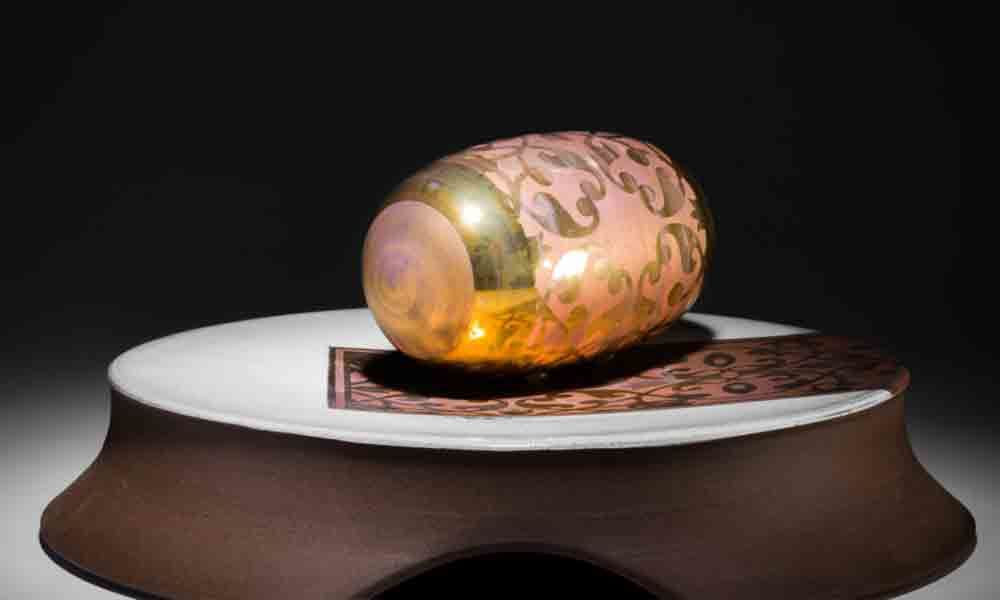Live
- Israel intercepts missile from Yemen, says IDF
- Assam only state to see dip in road accidents: CM Sarma
- MP BJP to celebrate former PM Vajpayee's birth anniversary on Dec 25
- Christmas Eve 2024: Heartwarming Messages To Share With Your Loved Ones
- PM Modi holds brainstorming session with economists in run-up to Budget
- “Telangana Ready to Support AI Technologies That Drive Social Impact,” says Special Chief Secy, Jayesh Ranjan at Woxsen University’s Future Tech Summit 2024
- Hero Motosports Team Rally Announces Squad For Dakar Rally 2025
- Two Men Found Dead In Parked Caravan In Kerala
- Mandhana moves closer to top spot in ODI, T20I rankings
- IND vs AUS Boxing Day Test 2024: Sam Konstas Debuts, Travis Head’s Fitness in Question
Just In
Vinod Kumar Daroz is a revered ceramic artist whose work has been chosen by numerous curators for symposiums and is currently exhibiting at Sands China properties as part of an Art Macau event.
Daroz's works are on display at the 'All That's Gold Does Glitter – An Exhibition of Glamorous Ceramics'. The exhibition runs at multiple Sands China properties until October 9 and features over 90 ceramic masterpieces from outstanding contemporary ceramic artists from 13 different countries and regions. The exhibition was curated over the course of 10 months by internationally renowned ceramic artist Caroline Cheng.
Daroz's work is inspired by the Indian traditions and mythology, and has had more than 13 solo shows with prestigious galleries, both in India and abroad. He is also a member of the International Academy of Ceramic (IAC) Geneva and International Ceramic Artists Association, Zibo China.
Narrating about his passion he says, "Born in a gold smith family, I used to help my father in making gold-ornaments after my school. During that time, I learnt many techniques of handling gold. My brother also ran a printing press. I used to help him do letter set composing, printing and binding books. I was gradually attracted towards the design elements. I feel making jewellery and composing graphics developed good aesthetic sense in me eventually."
He adds, "After my 12th grade, I started pursuing Bachelor's in Fine Arts and opted for pottery and ceramics. During the time my uncle, P R Daroz, a ceramist of repute, visited Hyderabad then. He was commissioned for a big project for 'Holiday Inn Hotel', Hyderabad. He convinced me to go to Baroda where I finished my post-graduation in Sculpture from Faculty of Fine Arts, Maharaja Sayajirao University, Baroda. I went to Puducherry during my masters to gain knowledge in ceramics under Ray Meeker and Deborah smith at Golden Bridge Pottery for three months. I was awarded with CWIT Scholarship (Charles Wallace India Trust by British council) to work with British artists in England. I worked with "Sandy Brown" and "Peter IIlsley" for three months. During my stay I met many European artists and was inspired by their artwork. After I returned, I started my own studio in a hired place and continued practicing ceramic art and participated in many group shows and solo shows."
Being a ceramic artist comes with its own set of challenges, "Major challenge that is faced by every ceramic artist is its recognition as fine art discipline. Most of the time, I have noticed that people just go for its physical form. It is not the that only the concerned people are unaware of its nuances; there are practitioners of the medium, who are unable to free themselves from the functionality of this medium. It is a great challenge to overcome and establish a new language in this particular practice. The contents of ceramic works are somehow less discussed in our country. It is true that while this medium is much loaded with its technical challenges, at the same time, it doesn't stop a ceramist to think beyond the formal aspects of the medium. It is a fact that there is a certain limitation this medium holds the viewer's entry into layers of meaning embodied in ceramics. One should not look at a ceramic sculpture like the way one looks at a narrative painting or a figurative sculpture. Appreciation of ceramic sculpture needs a great deal of patience and time to unlock its layers of meanings and experiences. The viewer's response is akin to knowledge base the person brings to the platter."
On why clay is no longer a second-class citizen in the art world, he says, "Initially clay has been used for making pots and other functional ware. Within the Indian context it took more than four decades to create awareness among people by PR Daroz, Rey Meeker, Ira Chaudhary and Devi Prasad to sensitize people with ceramic arts. However, many artists are using ceramics as their medium of expression."
Regarding the work he is exhibiting, he says, "My inspiration came from "Mortar and Pestle". Pestle is found in many traditional Indian households. A tool used for preparing food for sustenance. This work uses the form of a pestle as a symbol of creation. The correspondence of "Samudra Manthan" from the "Bhagavata Purana", which is one of the most revered mythological episodes in Indian history. The fundamental basis of Hindu religion leading to "Amrita" (nectar of immortality) can be seen as an interesting parallel in relation to the work. The floral motifs in the work signal towards fertility and abundance and the creation of beautiful things. The choice of materials and techniques in the works are used to enhance the act of creation. Works here are a combination of stoneware clay and porcelain, to show the contrast in characteristics of the form and material. Enhanced here are the play of metallic glazes and patterns, the strength of porcelain, and pure gold, reflecting the ethereal, mystical and spiritual aspect of creation."
Besides continuing his tryst with ceramics Vinod wants to start a ceramic studio in Hyderabad and invite people from all over the world. "I would like to train people and create more ceramic awareness in India. I want to encourage talented people, who cannot afford ceramic materials including clay."

© 2024 Hyderabad Media House Limited/The Hans India. All rights reserved. Powered by hocalwire.com









